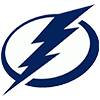Swinging strike percentage (SwStr%) is calculated by dividing total swinging strikes by total number of pitches. It is used as one measure of dominance for starting pitchers and has historically correlated fairly well to strikeout rate and even ERA. This week we will examine 10 pitchers with better than average swinging strike rates, but not necessarily above average overall performance in terms of ERA and other factors. The theory here is that if a pitcher is more dominant related to his SwStr%, in theory, his overall results should over time, trend towards above average. He may be getting unlucky on balls in play, allowing too many fly balls, or just facing some tough opponents. Being able to identify guys who could start trending up could help you get an edge. As a point of comparison, of the 87 starters that currently have enough innings to qualify for the ERA title, the average SwStr% is 11.1%.
Gerrit Cole, HOU (15.7 SwStr%, 4.11 ERA)
14 of the 30 runs Cole has allowed this year have come in two starts, as otherwise he's been excellent and should be going forward. His SwStr% ranks fourth in the league, and Cole's 13.7 K/9 and 2.3 BB/9 are both excellent. His 96.7 mph average fastball and 5.9 BB/K are both career bests, and I'd be pretty surprised if his ERA the rest of the way was above 3.00. Like many hurlers, Cole has been burned by the long ball (1.5 HR/9), though a 20.8 percent
Swinging strike percentage (SwStr%) is calculated by dividing total swinging strikes by total number of pitches. It is used as one measure of dominance for starting pitchers and has historically correlated fairly well to strikeout rate and even ERA. This week we will examine 10 pitchers with better than average swinging strike rates, but not necessarily above average overall performance in terms of ERA and other factors. The theory here is that if a pitcher is more dominant related to his SwStr%, in theory, his overall results should over time, trend towards above average. He may be getting unlucky on balls in play, allowing too many fly balls, or just facing some tough opponents. Being able to identify guys who could start trending up could help you get an edge. As a point of comparison, of the 87 starters that currently have enough innings to qualify for the ERA title, the average SwStr% is 11.1%.
Gerrit Cole, HOU (15.7 SwStr%, 4.11 ERA)
14 of the 30 runs Cole has allowed this year have come in two starts, as otherwise he's been excellent and should be going forward. His SwStr% ranks fourth in the league, and Cole's 13.7 K/9 and 2.3 BB/9 are both excellent. His 96.7 mph average fastball and 5.9 BB/K are both career bests, and I'd be pretty surprised if his ERA the rest of the way was above 3.00. Like many hurlers, Cole has been burned by the long ball (1.5 HR/9), though a 20.8 percent HR/FB rate suggests that number will trend down. His 2.38 xFIP also suggests he's one of the better pitchers in the league. Cole had a 2.01 ERA in five starts prior to his last outing in which he gave up six runs to the White Sox, so while the occasional poor outing may be there going forward, I'd still consider him a top three or four fantasy starter going forward.
Carlos Carrasco, CLE (14.2 SwStr%, 4.60 ERA)
Carrasco seemingly finds his way onto many preseason Cy Young sleeper lists due to his raw stuff and strikeout rate, but he just can't seem to quite get over the hump and post that sub-3.00 ERA that his underlying metrics seems to think will be there. Carrasco's FIPs the past two years have been 3.04 and 2.88, though his still-respectable ERAs have been in the 3.30 range. This year, it's been even worse, as Carrasco's ERA sits at 4.60 thanks to an elevated 2.0 HR/9. His K/9 and BB/9, however, have been at career-best levels at 11.1 and 1.5 respectably, but a 38.1 GB percentage (10 points below his career mark) plus an elevated 20.3 percent HR/FB rate is a deadly combination. There's no simple explanation other than poor command, but it's interesting to see that Carrasco has all but abandoned his curveball this year (four percent usage versus 12.3 percent last year and in his other good years). Maybe he needs to alter his pitch-mix and simply improve his location. Easier said than done, though I'd expect better results going forward, as his velocity seems to be improved in recent starts even if the results haven't consistently been there.
Kevin Gausman, ATL (13.5 SwStr%, 4.33 ERA)
Many folks reading this have been burned in the past by Gausman, and I'm certainly among that group. That said, he's a former No. 4 overall draft pick by a team (Baltimore) where pitchers go to not develop. Now that he's out of there, Gausman is at least somewhat interesting. His 9.3 K/9 is well above his career 8.2 mark, though a 3.5 BB/9 is below average. His splitter has been dominant at times, allowing Gausman to post a career-best SwStr%. When you draft a guy No. 4 overall, you're hoping for an ace, and while Gausman will likely never reach that level, he's showing he can at least be a solid mid-rotation type starter, and with a 3.56 FIP, it's possible he could get his ERA under 4.00 by year's end. Gausman does have some downside, as although he has his HR/9 at a solid 0.83, his 40.1GB percent is well off his recent numbers in that area, leading to some potential HR issues down the road.
Eduardo Rodriguez, BOS (12.6 SwStr%, 5.04 ERA)
E-Rod is one of those guys I seem to buy into every year, only to see him do what he's done so far this year. It's been a rough start, but on the plus side, we see this – 9.8 K/9, 3.0 BB/9, 3.56 FIP. I keep thinking a 26-year-old southpaw who throws in the 91 to 94 mph range with a plus changeup is due for a breakout, but it just isn't happening. This year, hitters are chasing more pitches out of the zone, and swinging and missing at a higher rate, so why the 5-plus ERA? The control has been average, and a 1.0 HR/9 is reasonable these days, but shaking command and control in spurts, and four starts in which he's allowed five-plus earned runs has done Rodriguez in. Perhaps the consistency will appear at some point, but I've moved on.
Jon Gray, COL (12.1 SwStr%, 4.62 ERA)
Raise your hand if you've been fooled by this guy before. Gray posted a 5.62 ERA last year despite a solid 4.02 FIP. This year, he's posted an excellent 9.9 K/9, though his control has taken a bit of a step back with a 3.4 BB/9. Gray has posted QSs in two of his last three outings but has also allowed five or more runs in three of his last five to continue the lack of consistency. As usual, the HR ball has plagued the right-hander, who has allowed homers in nine of his 10 starts. It's been a mixed bag as usual for Gray, who despite the solid SwStr% has also allowed a career-high 40 percent hard hit rate. Gray has been better at home (4.00 ERA) for the third straight season, giving us dreams that if he can just pitch better on the road, we'd have a 3.50 type ERA. I wouldn't count on it though.
Yu Darvish, CHC (12.6 SwStr%, 5.40 ERA)
Darvish's $126 million contract has been a disaster since the ink dried, but is there some hope yet? Darvish posted a 3.52 ERA in three starts (15.1 innings) with 24 strikeouts before allowing six runs on 12 hits in 12 innings last time out. He's also allowed 11 homers in 55 innings and has posted a 1.62 ERA. For Darvish, every positive this year seems to have a negative:
Positive: 11.0 K/9
Negative: 6.2 BB/9
Positive: 48.9 GB percentage
Negative: 93.8 mph average fastball (1.0 mph slower than 2018)
Darvish has allowed 11 homers in his 11 starts and 45 in his last 50, so the home run ball is always going to be part of his game. Clearly the key will be limiting the free passes, something that he's been doing a bit better lately (2.5 BB/9 in his last three), but I'll need to see a bit more to buy in even a little.
Michael Pineda, MIN (11.8 SwStr%, 5.43 ERA)
Despite allowing seven home runs, Pineda has recorded three consecutive quality starts (4.26 ERA), so while his velocity continues to trend down (92.1 mph average fastball vs. 93.9 last year), a 1.9 BB/9 has helped limit the damaged caused by an astronomical 2.4 HR/9. Remember when Pineda used to throw hard and generate a ton of ground balls? Those days appear over. Back in 2016 for example, Pineda posted a 45.8 GB percentage while averaging 94.1 mph with the fastball. This year, those numbers are 32.9 percent and 92.1 mph. Less velocity and more fly balls can be — and in Pineda's case, are — a deadly combination. He'll probably have a couple two- or three-start runs in which we get drawn back in, but I see him ultimately landing in the bullpen, perhaps even in the second half of this year.
Noah Syndergaard, NYM (11.3 SwStr%, 4.93 ERA)
Syndergaard's SwStr% is barely above average and is well below his 13.2 percent career mark, but good things are in store for Thor the rest of the way regardless. His xFIP sits at 3.65, and his ratios are typically excellent with a 9.4 K/9 and 2.0 BB/9. Like most on this list, his HR/9 is above his career number, though a 1.3 HR/9 these days isn't all that bad. With a 97.6 mph average fastball, the velocity has been there, but his typically lights out slider hasn't shown up much yet. For one thing, he's throwing it far less (13 percent vs. 20.9 percent last year), and for another, it has graded out as below league average. Perhaps he's using it less to reduce the strain on an arm that limited him to 32 starts from 2017 to 2018. Either way, Syndergaard should have a strong rest of the way, but is he going to be that guy who "pulls a DeGrom" and posts a Cy Young / sub-2.00 ERA season? Not this year, but when you throw that hard and have excellent control AND are just 26, it could happen one of these years.
Sandy Alcantara, MIA (11.9 SwStr%, 4.50 ERA)
At this point, Alcantara appears to be Derek Jeter's best hope for salvaging something from dealing his All-Star outfield last season. His overall numbers are mediocre, including a 4.50 ERA, 1.43 WHIP, 5.9 K/9 and 4.0 BB/9. So, what's this hope? For starters, a fastball that averages 95.4 mph, and second, an above-average SwStr%. Factor in a solid 47.2 GB percentage, and you have the profile of a guy whose stuff isn't translating into results but could at some point. The groundball rate has allowed Alcantara to post a decent 0.93 HR/9, but the walks and overall lack of strong secondary stuff have hurt him. Alcantara randomly recorded a two-hit complete game shutout earlier this month, but that was against a depleted Mets offense, and Alcantara followed up that one with a 5 IP/4 ER outing in his next start. I'm not sure it happens for him this year, but this is a guy who could either harness his stuff and breakout at some point or find himself in middle relief. High ceiling and even lower floor.
J.A. Happ, NYY (11.1 SwStr%, 5.09 ERA)
With a 1.1 HR/9 career headed into 2019, Happ has always had some issues with the long ball, but he's taken it to a new level in 2019, allowing 14 long balls in 58 innings for a 2.2 HR/9. Happ has seen his fastball velocity drop sharply over last year (90.6 mph vs. 92.0 mph), and it's shown in his 7.7 K/9 (9.8 in 2018). Happ has also seen his FB percentage climb a little (43.4 percent vs. 42.4 percent), and his hard hit rate has jumped sharply from 30.9 to 39.2 percent). For a guy who didn't throw overly hard in the first place to lose 1.4 mph on his fastball is huge, and at 36, we have to wonder whether Happ is nearing the end. That's probably a bit overdramatic, but that lost velocity is troubling. The SwStr% does provide some optimism, but when Happ misses, it's been ugly.





































